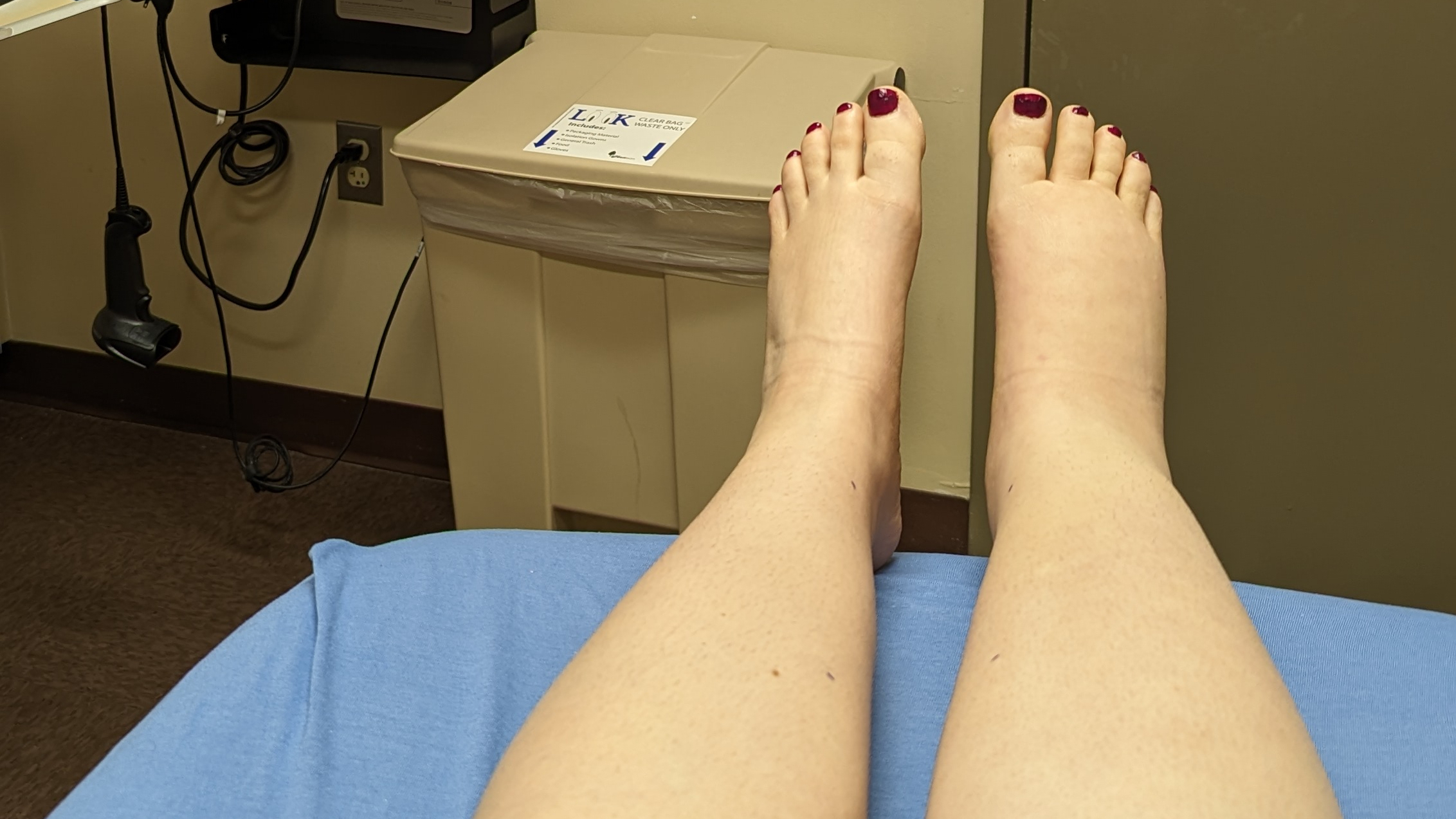Compression pumps are a hot topic within the lymphedema community—I have changed my views on them a few times myself over the years!—but a study published in the Journal of the American Medical Association (JAMA) Dermatology yesterday may help settle some of the debate.
Titled “The Cutaneous, Net Clinical, and Economic Benefits of Advanced Pneumatic Compression Devices in Patients with Lymphedema,” this national study shared important research regarding the benefits of using an advanced pneumatic compression device (specifically the Flexitouch® System by Tactile Medical) on not only the treatment of lymphedema but the overall cost of care as well.
The authors of the study—which include leading experts in lymphedema and public health research from the University of Minnesota, Vanderbilt University School of Nursing, and Stanford University—analyzed 718 lymphedema patients from across the United States over a five-year period, and evaluated clinical events and costs for a 12-month period prior to and during a 12-month period of treatment. The participants included both cancer patients and non-cancer patients.
The study found that, through use of the Flexitouch at-home advanced pneumatic compression treatment, the rate of hospital and physical therapy visits were reduced, thus lowering cost of care. It also defined the following:
- 79% reduction in rate of cellulitis episodes among cancer patients (75% for non-cancer patients)
- 54% reduction in rate of inpatient hospitalizations for non-cancer patients
- 37% reduction in total lymphedema-related costs per patient, excluding medical equipment, among cancer patients (36% for non-cancer patients)
- 40% reduction in rate of outpatient hospital visits among non-cancer patients (29% for cancer patients)
- 34% reduction in rate of physical therapy visits among non-cancer patients (30% for cancer patients)
In a press release about the study, Alan T. Hirsch, M.D., Director of the Vascular Medicine Program at the University of Minnesota Medical School and Chief Medical Officer of Tactile Medical, calls the study a “public health success”:
“Healthy lymphatic vessels are – very simply and without controversy – essential to good health. By studying a very large group of patients offered this modern treatment, delivered within the patient’s own home, and then carefully measuring the impact, we were extremely gratified that these skin infections were lowered by nearly 80% within one year. A device used at home can provide amazing reduction – for the patient and for the nation – of these skin infections, associated morbidity and cost. This is the very definition of a public health success.”
What is the impact of this research?
Consider this: the current standard of lymphedema care is combined decongestive therapy, a labor-intensive approach I’m sure most of you are familiar with. The components of this multimodal treatment are professionally administered manual lymph drainage, bandaging, decongestive exercise, skin care, and education in long-term lymphedema self-management.
What pneumatic compression devices provide is an additional and possibly more effective management option for patients, as these devices have been shown to be physiologically effective in improving lymphatic function and lymph flow, reducing the volume of edema. They’ve also demonstrated clinical benefits, as they improve patient-reported symptoms and quality of life. (source)
I can vouch for this myself, as I’ve been using a CircuFlow 5208 for about five or six months now with positive results. In fact, at my most recent check-up with my lymphedema doctor last month, the volume of my swelling had decreased since the previous visit due to my daily use of the compression pump in tandem with my decongestive therapy (compression garment, manual lymph drainage, etc.). It’s been an empowering experience: the pump has given me a greater sense of control over my lymphedema and its management, not to mention it makes my leg feel physically better than it had before.
The implications of this study are huge in terms of reducing the financial burden of lymphedema care, as well as improving the overall quality of life of those of us living with it. Because the treatment is done at home, pneumatic compression devices make lymphedema care more accessible to the patient, rather than having to go to the hospital or doctor’s all the time. It also ensures more consistent therapy, as the patient can perform it on a daily basis in their own home. Pumps can be expensive, but some insurance companies cover them (mine did); hopefully with data like this to support the effectiveness of pneumatic compression devices, more and more insurance companies will follow suit.
If you are interested in pneumatic compression devices, talk to your doctor or lymphedema therapist about your options. Everyone is different, so it is important to consult with a professional before trying a new treatment or therapy.
Study Data
Click to enlarge the images.
Interested in reading more?
Here are a few of the studies that were referenced in yesterday’s study published by JAMA Dermatology:
- Cormier JN, Askew RL, Mungovan KS, Xing Y, Ross MI, Armer JM. Lymphedema beyond breast cancer: a systematic review and meta-analysis of cancer-related secondary lymphedema. Cancer. 2010;116(22):5138-5149.
- Brayton KM, Hirsch AT, O Brien PJ, Cheville A, Karaca-Mandic P, Rockson SG. Lymphedema prevalence and treatment benefits in cancer: impact of a therapeutic intervention on health outcomes and costs. PLoS One. 2014;9(12):e114597.
- Fu MR, Ridner SH, Hu SH, Stewart BR, Cormier JN, Armer JM. Psychosocial impact of lymphedema: a systematic review of literature from 2004 to 2011. Psychooncology. 2013;22(7):1466-1484.
- Ridner SH, Deng J, Fu MR, et al. Symptom burden and infection occurrence among individuals with extremity lymphedema. Lymphology. 2012;45(3):113-123.
- Adams KE, Rasmussen JC, Darne C, et al. Direct evidence of lymphatic function improvement after advanced pneumatic compression device treatment of lymphedema. Biomed Opt Express. 2010;1(1):114-125.
- Muluk SC, Hirsch AT, Taffe EC. Pneumatic compression device treatment of lower extremity lymphedema elicits improved limb volume and patient-reported outcomes. Eur J Vasc Endovasc Surg. 2013;46(4):480-487.
- Pappas CJ, O’Donnell TF Jr. Long-term results of compression treatment for lymphedema. J Vasc Surg. 1992;16(4):555-562.
- Ridner SH, Murphy B, Deng J, Kidd N, Galford E, Dietrich MS. Advanced pneumatic therapy in self-care of chronic lymphedema of the trunk. Lymphat Res Biol. 2010;8(4):209-215.
- Ridner SH, McMahon E, Dietrich MS, Hoy S. Home-based lymphedema treatment in patients with cancer-related lymphedema or noncancer-related lymphedema. Oncol Nurs Forum. 2008;35(4):671-680.
Header image of Flexitouch System from TactileMedical.com.







Leave a Reply to Kathy VencilCancel reply